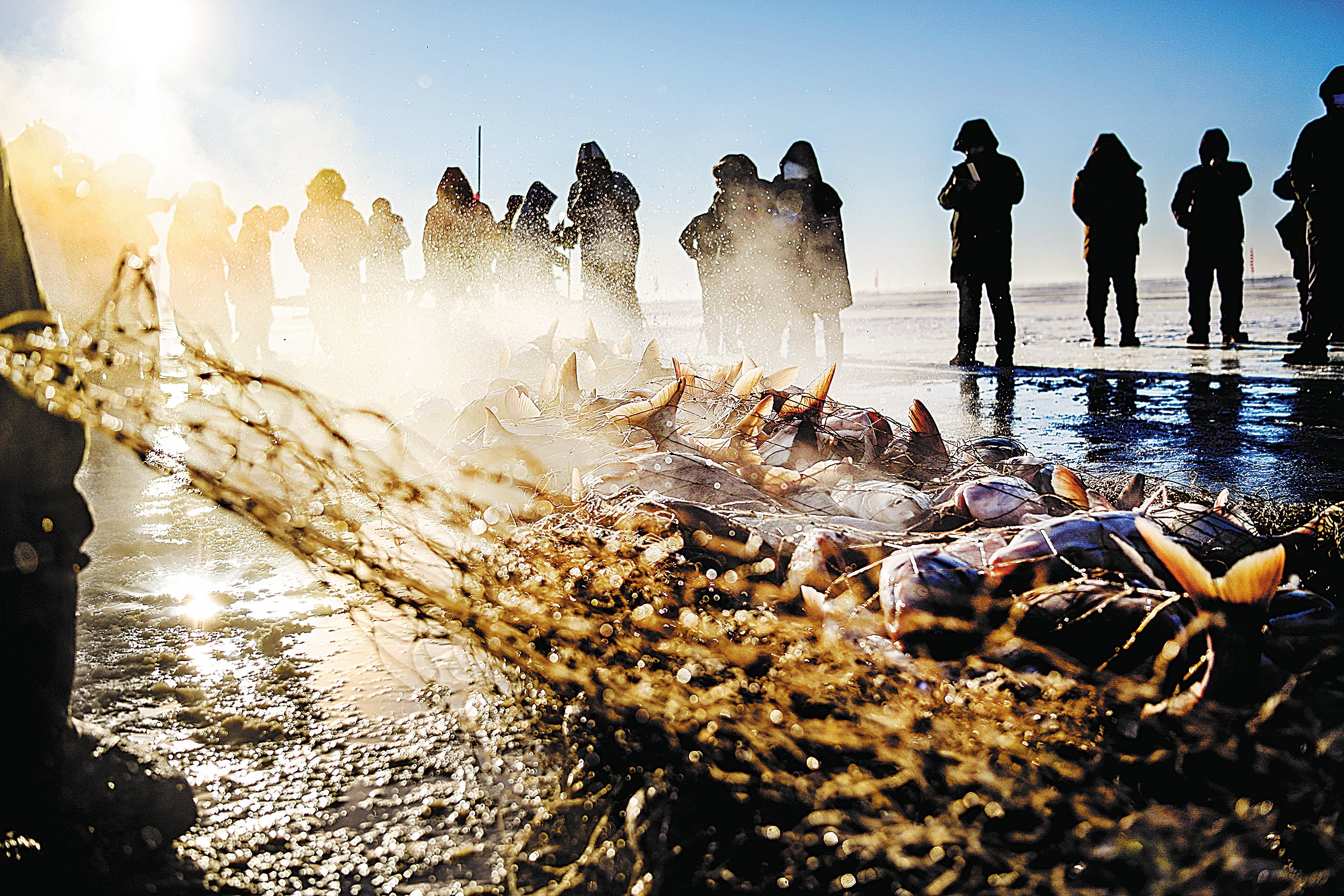Thousands of years on, the great catch continues
THE ARTICLES ON THESE PAGES ARE PRODUCED BY CHINA DAILY, WHICH TAKES SOLE RESPONSIBILITY FOR THE CONTENTS

Every year for more than a millennium fishing families have braved the sub-zero temperatures, biting winds and the deep snow of Songyuan, a city in Jilin province, Northeast China, to search for an underwater fortune at Chagan Lake, one of the biggest freshwater lakes in the country.
Chagan, also referred to by locals as Holy Water Lake, is the only place in China where you can still find fishermen using a Mongolian fishing method that dates back centuries. The method, listed as a form of National Intangible Cultural Heritage, has barely changed over time
Holes are drilled in the ice to lower a huge 1.2-mile-long net into position underwater. Once it fills up with fish, the net is hauled out of the water using a capstan turned by Mongolian horses. The biggest fish of the season’s first catch sells for a large sum of money, marking the official start of winter fishing.
This season’s fish, which was caught on 28 December during the 20th Chagan Lake Ice and Snow Fishing and Hunting Cultural Tourism Festival, sold for 2,999,999 yuan (£348,000) at auction.
As it is important to ensure that this tradition can continue without damaging the lake’s ecology, starting this season the money earned from the auction will be donated to the Chagan Lake Ecological Environmental Protection Charity Fund, Global Times reported. It will then be used to buy fish fry to restock the lake. As the fry mature they will ensure that there is always a stable population of healthy fish for fishermen to catch.
Yan Laisuo, a staff member of the Chagan Lake Tourism and Economic Development Zone, said the lake nearly dried up in the 1970s after being cut off from its water source. Fishermen were forced to give up their annual tradition and take on odd jobs to survive. But in 1976 the local government rallied the people to build a canal.
After eight years of construction, the canal was able to bring water from the Songhua River to Chagan. Decades later the lake’s total area has expanded to 154 square miles. In 2013 Jilin started a river-lake connection project, linking Chagan to surrounding lakes and rivers, which made the lake’s water even cleaner and clearer.
The construction of a town focused on eco-friendly tourism has helped development. Chagan Lake Ecological Town, eight miles from the Chagan Lake Reserve, offers accommodation, dining, sightseeing and other tourist-oriented businesses that have increased local incomes and made it more convenient for people to visit the area. It is powered by green energy, specifically wind power and biogas, and Zhang Guannan, a clerk at the town’s construction office, said this has reduced the environmental burden on the lake because farms and tourism projects that were previously affecting the environment have been removed or relocated.
Tourism brought in 1.65 billion yuan (£189 million) in 2020, putting money into local pockets and allowing more visitors to enjoy the beauty of Chagan. All this was achieved without harming the lake or the animal and plant life that call it home.
Now, the fishermen are free to do what they have done for centuries – bag the biggest fish possible and share it with their families and friends.
Previously published on Chinadaily.com.cn
